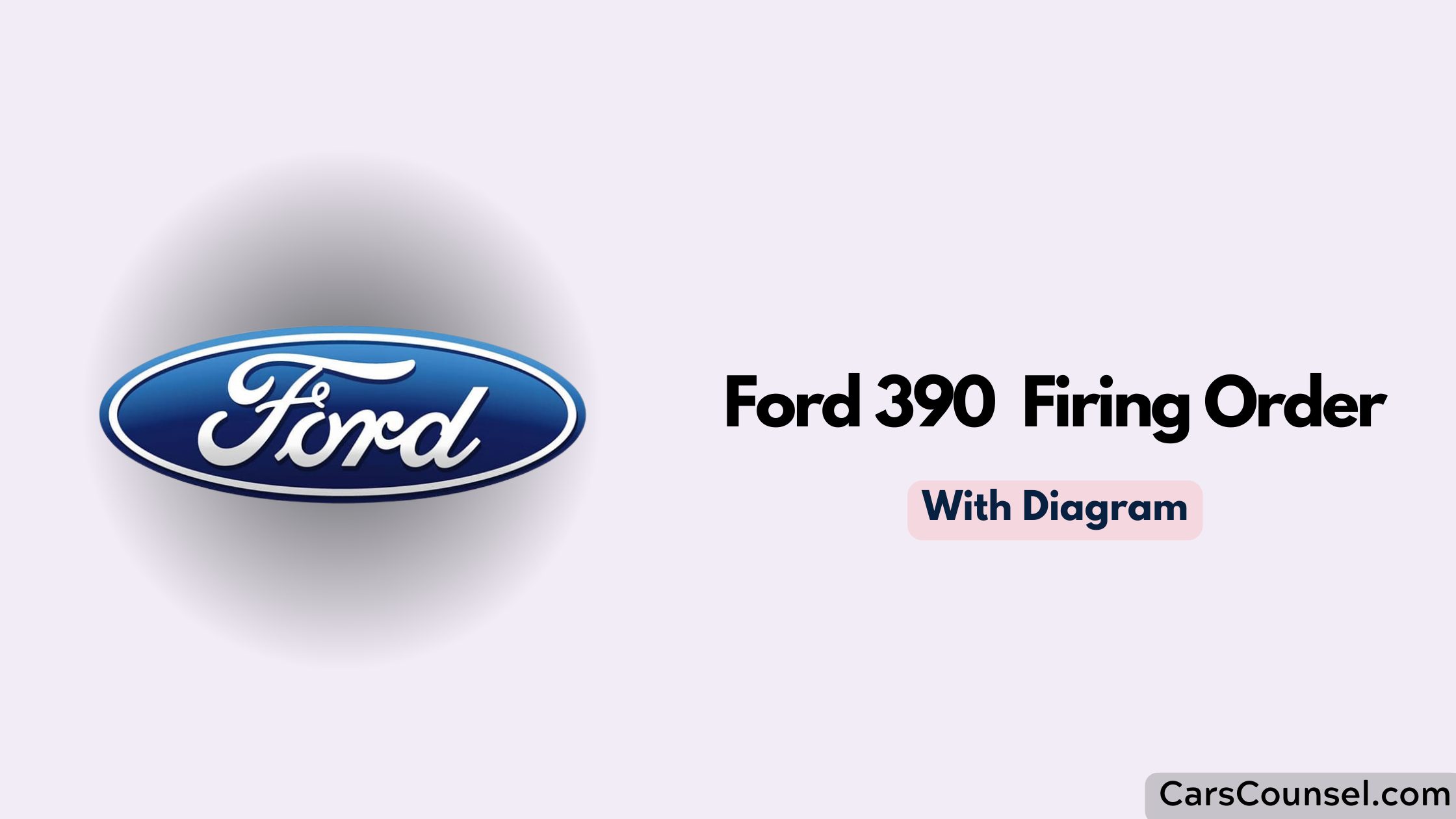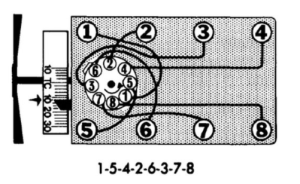The order in which the cylinders in your Ford 390 fire is 1-5-4-2-6-3-7-8. This order is important to make sure your engine runs smoothly, reduces shaking, and gives the best performance.

Each number stands for a different cylinder. Following this order correctly will get the most power and lifespan out of your engine. If you make a mistake with the order, your engine might shake and not have as much power.
Understanding this firing order can help improve your Ford 390’s performance and lifespan.
Quick Navigation
Key Takeaways
- The order in which the Ford 390 engine fires is 1-5-4-2-6-3-7-8, with each number standing for a different part of the engine.
- Sticking to this firing sequence helps the Ford 390 run smoothly and perform at its best.
- The firing sequence is important in decreasing engine shake and enhancing power, which helps the car run better overall.
- When you’re adjusting the engine, it’s really important to get the firing order right to help the engine last longer and work more efficiently.
- Having a picture to show the firing order can be really helpful in making sure it’s done right, and can also stop the engine from getting damaged.
Understanding Ford 390 Firing Order

To really get the Ford 390 firing order, you need to know that this pattern, 1-5-4-2-6-3-7-8, is designed to make sure your Ford 390 engine runs smoothly and lasts a long time. This order is really important for getting the best performance out of your ford 390, especially when you’re rebuilding the engine.
Each number stands for a different cylinder, and the sequence shows the order in which each cylinder’s spark plug lights up. If the firing order is wrong, it can cause the engine to not burn fuel properly, lower power, or even damage the engine. The right firing order makes sure the engine gets the most power, reduces shaking, and helps the engine overall.
Historic Overview of Ford 390 Engine
Taking a look back at the Ford 390 engine, it was a key part in Ford’s range, famous for its strong power and widespread use from 1961 to 1971. In the car engine world, the Ford 390 stood out because of its impressive performance and long-lasting quality. Now, let’s break it down:
- The Ford 390 was part of a group of Ford engines known as the FE (Ford-Edsel) series, known for their strong power and performance.
- The way the engine was built, with a 4.05-inch bore and 3.78-inch stroke, helped it perform so well.
- It was common to restore these engines, as keeping the Ford 390’s performance up meant regular maintenance.
- Its reputation for being tough and powerful made it a favorite among car lovers, which is why it stayed on the market for so long.
Application of Firing Order
If you’re curious about the Ford 390 engine‘s power and performance, it’s important to know that the firing order (1-5-4-2-6-3-7-8) plays a big role.
The firing order is about how the engine’s pistons fire. When they fire in the right order, it helps the engine run smoother by cutting down on shake and vibration. It also makes the engine more powerful and efficient, which can improve performance and save on fuel.
Knowing the right firing order is also really important when you’re tuning the engine. If you tune it wrong, the engine can misfire, lose power, and even get damaged. So, understanding the firing order of the Ford 390 engine is key if you’re trying to get the best performance and lifespan out of it.
Detailed Torque Specifications
When you’re working on your Ford 390 engine, it’s very important to follow the specific tightening instructions for each part. This is because each part needs to be tightened to a specific level to make sure it works properly and lasts a long time.
Here are some specific instructions you should know:
- The main cap bolts need to be tightened to somewhere between 95-110 foot-pounds.
- The connecting rod bolts should be tightened to between 50-73 foot-pounds.
- The cylinder head bolts need to be tightened to 65-75 foot-pounds.
- Other parts also have their own specific tightening levels.
Setting Timing for Ford 390
Tweaking the timing on your Ford 390 engine is crucial for making sure it runs smoothly and at its best. First, park your car on flat ground and set the parking brake for safety. Next, find the timing marker on the cover of the timing chain. This is where you’ll be making your changes. Now, using a wrench, loosen the bolt that holds the distributor in place. This makes it possible to adjust the timing.
Getting the timing just right is really important for how well your engine performs. If the timing is too far ahead or too far behind, it can make the engine lose power, use more fuel, or even damage the engine. Once you’ve made the changes, tighten the bolt that holds the distributor in place. Remember, checking and adjusting your engine’s timing regularly will help keep it running at its best and lasting longer.
Pros and Cons of Ford 390
When you’ve fine-tuned your Ford 390, it’s good to think about the good and bad points of this engine.
The Ford 390 is known for its strong power output. This gives a fun drive, especially when you need to speed up.
But it’s not all perfect. Here are some good and bad points to think about:
- Good point: Strong power gives a fun, powerful drive
- Bad point: It’s not great on gas, so it uses more fuel
- Good point: People often say the Ford 390 lasts a long time and is tough
- Bad point: Its big size and heavy weight can make it hard to control
Maintenance Tips for Efficiency
To make sure your Ford 390 engine works well and uses fuel efficiently, you need to do regular maintenance that includes a few important steps. Always check the spark plugs and wires to see if they’re worn out.
Adding performance improvements, like a new air intake or a better carburetor, can help your engine work better. But, make sure these improvements work with your engine so you don’t cause any damage.
It’s also important to change the oil regularly, and using good quality oil can make your engine run better. Knowing how to figure out and fix problems quickly is really useful. Always look for things like leaks, strange sounds, and other signs of possible issues.
Lastly, keep your engine clean to stop any build-up that could make it work less effectively. Taking good care of your engine will keep your Ford 390 running at its best.
Fuel Consumption and Mileage
Understanding how much gas your Ford 390 engine uses and how far it can go on a tank of gas is important. Here’s what you need to know:
- The Ford 390 is a strong engine, but it’s not known for saving gas. Because it’s a big engine, it uses more gas than smaller ones.
- Regular tune-ups can help it use gas a little more efficiently.
- The way you drive also affects how much gas you use. If you drive fast and hard, you’ll use more gas.
- The kind of gas you use matters too. Gas with a higher octane rating can make your engine run more efficiently.
Conclusion
We hope you now understand the Ford 390 firing order better.
This engine is powerful and has been the heart of many vehicles because of its high performance.
Taking care of the engine, including maintaining the right firing order, is very important.
Pay attention to the details and keep your Ford 390 engine running powerfully and efficiently.

